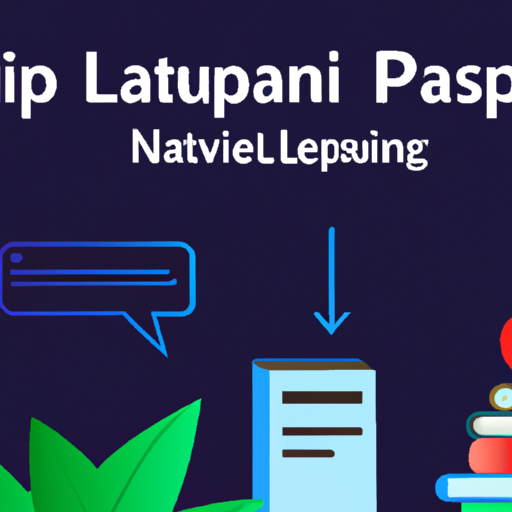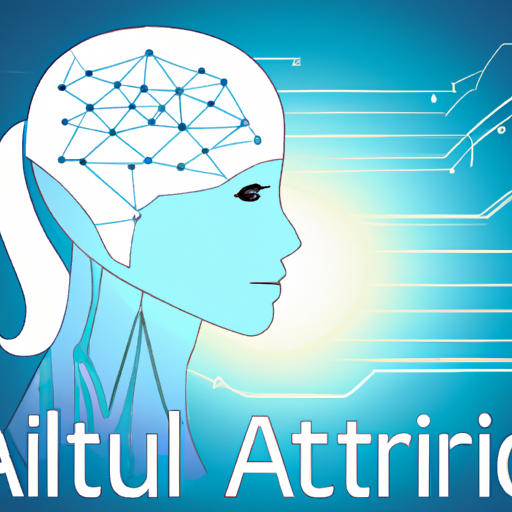-
Table of Contents
- Introduction
- How to Get Started with Natural Language Processing: Tools and Resources
- The Benefits of Using NLP for Text Analysis and Machine Learning
- and Pragmatics
- Semantics
- Understanding the Basics of NLP: Syntax
- Exploring the Different Types of NLP Tasks and Applications
- What is Natural Language Processing (NLP) and How Does it Work?
- Conclusion
“Unlock the Power of NLP with The Complete Guide!”
Introduction
The Complete Guide to Natural Language Processing (NLP) is an essential resource for anyone interested in understanding and applying the principles of natural language processing. This guide provides an overview of the fundamentals of NLP, including its history, applications, and techniques. It also covers the latest advances in the field, such as deep learning and neural networks. With this guide, you will gain a comprehensive understanding of the fundamentals of NLP and be able to apply them to your own projects.
How to Get Started with Natural Language Processing: Tools and Resources
Natural language processing (NLP) is a rapidly growing field of computer science that enables computers to understand and process human language. NLP is used in a variety of applications, such as machine translation, text summarization, question answering, and sentiment analysis. If you’re interested in getting started with NLP, there are a number of tools and resources available to help you.
First, it’s important to understand the basics of NLP. There are a number of online courses and tutorials available to help you learn the fundamentals. Coursera offers a free course on Natural Language Processing, and Stanford’s Natural Language Processing with Deep Learning course is also a great resource. Additionally, there are a number of books available on the subject, such as Speech and Language Processing by Jurafsky and Martin and Natural Language Processing with Python by Bird, Klein, and Loper.
Once you’ve gained a basic understanding of NLP, you’ll need to choose a programming language and toolkit. Python is the most popular language for NLP, and there are a number of libraries available to help you get started. The Natural Language Toolkit (NLTK) is a popular library for Python, and spaCy is another popular library for advanced NLP tasks. Additionally, there are a number of cloud-based NLP services available, such as Google Cloud Natural Language API and Amazon Comprehend.
Finally, it’s important to stay up to date on the latest developments in the field. There are a number of blogs and websites dedicated to NLP, such as the Natural Language Processing blog and the NLP Newsletter. Additionally, attending conferences and workshops is a great way to stay informed and network with other NLP professionals.
By following these steps, you can get started with NLP and begin exploring the exciting possibilities of this rapidly growing field.
The Benefits of Using NLP for Text Analysis and Machine Learning
Natural Language Processing (NLP) is a powerful tool for text analysis and machine learning. It is a branch of artificial intelligence that deals with understanding and manipulating human language. NLP has become increasingly popular in recent years due to its ability to process large amounts of data quickly and accurately.
NLP can be used to analyze text in a variety of ways. It can be used to identify the sentiment of a text, extract key phrases, and classify documents. It can also be used to detect patterns in text, such as topics, entities, and relationships. This can be used to build predictive models for tasks such as sentiment analysis, topic classification, and text summarization.
NLP can also be used to improve machine learning models. For example, it can be used to pre-process text data before it is fed into a machine learning model. This can help the model better understand the data and make more accurate predictions. NLP can also be used to generate features from text data, which can be used to improve the performance of machine learning models.
Overall, NLP is a powerful tool for text analysis and machine learning. It can be used to analyze text, extract features, and improve machine learning models. It is an invaluable tool for any data scientist or machine learning engineer.
and Pragmatics
The study of linguistics is a complex field that encompasses many different aspects of language. One of the most important aspects of linguistics is the study of syntax and pragmatics. Syntax is the study of the structure of language, including the rules that govern how words are combined to form phrases and sentences. Pragmatics is the study of how language is used in context, including the social and cultural implications of language use.
Syntax is a fundamental part of language, as it provides the framework for how words are combined to form meaningful sentences. Syntax is concerned with the order of words in a sentence, the types of words that can be used in a sentence, and the rules that govern how words are combined. For example, in English, the subject of a sentence typically comes before the verb, and adjectives usually come before the nouns they modify.
Pragmatics is the study of how language is used in context. It looks at how language is used to communicate meaning, and how the meaning of a sentence can change depending on the context in which it is used. Pragmatics also looks at how language is used to convey social and cultural values. For example, the use of certain words or phrases may be seen as polite or impolite, depending on the context.
Syntax and pragmatics are both important aspects of linguistics, and they are closely related. Syntax provides the structure for how words are combined to form meaningful sentences, while pragmatics looks at how language is used in context. Together, they provide a comprehensive understanding of how language works.
Semantics
The term ‘semantics’ is used to refer to the study of meaning in language. It is a branch of linguistics that focuses on the interpretation of words, phrases, and sentences. Semantics is concerned with how words are used in context and how they convey meaning.
Semantics is a complex field of study that involves the analysis of the structure of language, the relationship between words and their meanings, and the interpretation of language in different contexts. It is also concerned with the study of how language is used to express ideas and how it can be used to communicate effectively.
Semantics is an important part of language and communication. It helps us to understand the meaning of words and phrases, and to interpret the messages that are being conveyed. It is also used to help us understand the implications of certain words and phrases, and to determine the appropriate use of language in different contexts.
Semantics is a valuable tool for understanding language and communication. It can help us to better understand the meaning of words and phrases, and to interpret the messages that are being conveyed. It can also help us to better understand the implications of certain words and phrases, and to determine the appropriate use of language in different contexts.
Understanding the Basics of NLP: Syntax
Natural Language Processing (NLP) is a branch of artificial intelligence that deals with the understanding and manipulation of human language. It is used to analyze and interpret text, speech, and other forms of communication. NLP is used in a variety of applications, such as machine translation, text summarization, question answering, and text classification.
Syntax is a fundamental component of NLP. It is the study of the structure of sentences and phrases in a language. Syntax is concerned with the rules that govern the formation of sentences and phrases in a language. It is used to determine the meaning of a sentence or phrase by analyzing its structure. Syntax is also used to identify errors in a sentence or phrase, such as incorrect word order or incorrect use of punctuation.
NLP systems use syntax to analyze and interpret text. Syntax analysis is used to identify the parts of speech in a sentence, such as nouns, verbs, adjectives, and adverbs. It is also used to identify the relationships between words and phrases, such as subject-verb agreement and verb tense. Syntax analysis is used to identify the structure of a sentence, such as the order of words and phrases, and the types of phrases used.
Syntax is an important part of NLP because it helps to identify the meaning of a sentence or phrase. By understanding the structure of a sentence, NLP systems can better interpret the meaning of the text. Syntax is also used to identify errors in a sentence or phrase, which can help to improve the accuracy of NLP systems.
Exploring the Different Types of NLP Tasks and Applications
Natural Language Processing (NLP) is a field of Artificial Intelligence (AI) that focuses on the interactions between computers and human language. It is a subfield of computer science, information engineering, and artificial intelligence concerned with the interactions between computers and human (natural) languages, in particular how to program computers to process and analyze large amounts of natural language data.
NLP tasks can be divided into two main categories: understanding and generation. Understanding tasks involve analyzing and interpreting natural language data, while generation tasks involve creating natural language data.
Understanding tasks include tasks such as sentiment analysis, text classification, and entity recognition. Sentiment analysis is the process of determining the attitude or emotion of a speaker or writer with respect to a particular topic. Text classification is the process of assigning a text document to one or more categories based on its content. Entity recognition is the process of identifying and classifying named entities in a text.
Generation tasks include tasks such as machine translation, text summarization, and dialogue systems. Machine translation is the process of automatically translating text from one language to another. Text summarization is the process of creating a concise and meaningful summary of a text document. Dialogue systems are computer programs that interact with humans in natural language.
NLP applications are used in a variety of fields, including healthcare, finance, customer service, and education. In healthcare, NLP is used to analyze patient records and medical images to identify diseases and treatments. In finance, NLP is used to analyze financial documents and news articles to identify trends and make predictions. In customer service, NLP is used to analyze customer feedback and provide personalized customer service. In education, NLP is used to analyze student essays and provide feedback.
NLP is an important and rapidly growing field of AI, and its applications are becoming increasingly important in many areas. By understanding the different types of NLP tasks and applications, we can better understand how NLP can be used to improve our lives.
What is Natural Language Processing (NLP) and How Does it Work?
Natural Language Processing (NLP) is a branch of Artificial Intelligence (AI) that deals with the analysis and understanding of human language. It is used to process and analyze large amounts of natural language data, such as text, audio, and video. NLP enables machines to understand and interpret human language, allowing them to interact with humans in a more natural way.
NLP works by breaking down language into its component parts, such as words, phrases, and sentences. It then uses algorithms to analyze the data and identify patterns and relationships between the different elements. This allows the machine to understand the meaning of the text and to generate meaningful responses.
NLP is used in a variety of applications, such as machine translation, text summarization, question answering, and sentiment analysis. It is also used in natural language interfaces, such as chatbots and virtual assistants. NLP is an important tool for understanding and interpreting human language, and it is becoming increasingly important as AI technology advances.
Conclusion
The Complete Guide to Natural Language Processing (NLP) is an invaluable resource for anyone interested in learning more about the field of NLP. It provides a comprehensive overview of the various techniques and algorithms used in NLP, as well as practical advice on how to apply them in real-world applications. With its clear explanations and examples, this guide is an excellent starting point for anyone looking to gain a better understanding of NLP and its potential applications.



